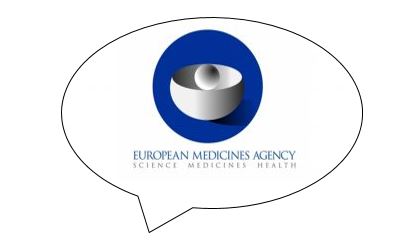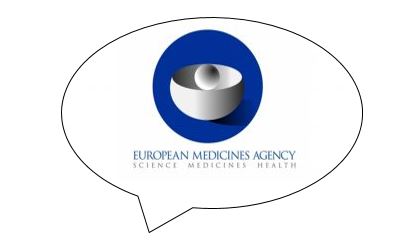How Electronic Product Information Could Revolutionise European Drug Submissions
The translation of product information (PI) and the correct application of QRD conventions and terminology are central to our involvement in European drug submissions, which are a core aspect of our business.
Use of templates and the corresponding appendices, glossaries and standards are essential to submit PIs that are not only consistent and accurate, but also safe for patients and healthcare providers alike.
It is therefore with great interest that we look upon the development of electronic product information (ePI). This initiative aims to modernise not only the manner in which product information is authored and submitted, but also the way in which it is distributed to patients and healthcare professionals.
ePI and Healthcare Digitisation in Europe

The development of electronic product information (ePI) is intended to improve access to up-to-date product information on medicines when and where it is needed.
– European Medicines Agency
Digitisation is a top priority for the EU, and ePI is just one part of a wider digital transformation of healthcare in Europe.
There is a roadmap in place at the European Medicines Agency, in collaboration with Heads of Health Authorities, Working Groups and the European Commission, who are driving this initiative towards:
“a technical foundation for the dissemination of trustworthy, regulator-authorised product information in the growing digital world, which will provide patients / consumers and HCPs with an additional and personalised approach for information on medicines (i.e. enabling more efficient retrieval of information the user is looking for in searches and facilitating the use of their preferred e-platforms).”
The new format for product information would be structured text in Extensible Markup Language (XML), readable by both human and computer, and able to be accessed, exchanged and updated via a centralised platform.
The aim is not to change the format, terminology or readability of the existing templates for product information, but to enable it to be distributed in real-time to ensure that every patient and healthcare provider has access to the most up-to-date version of the PI.
With this initiative now in full-swing, DWL reflects on our history translating PIs for EU drug submissions, including a previous attempt to move product information from Word and PDF formats into a semi-structured XML format.
A Short History of Product Information
The first QRD templates were published in 1996, based on the regulations set out in Directive 92/27/EEC released that year. They were basic and shorter than today’s templates: the PIL alone has grown from around 100 words in 1996 to over 1500 words in version 10.1 currently applicable.
It also became a legal requirement to include a Patient Information Leaflet inside the packaging of all medicines distributed within the European Union, as a way to ensure that patients and caregivers could use medicines properly and seek further medical advice if needed.
In 1999, the then European Medicines Evaluation Agency (EMEA) and European Federation of Pharmaceutical Industries and Associations (EFPIA) aimed to develop a new system for electronic exchange of product information in support of new product applications or variations post-approval. This was named Product Information Management (PIM). Through an XML framework, they sought to design a system for electronic maintenance and submission of product information in the EU.
In 2000, the first PI to be submitted using PIM was successfully delivered.
In 2005, Directive 2004/27/EC required the package leaflet to “reflect the results of consultations with target patient groups to ensure that it is legible, clear and easy to use”. This involved User/Readability Testing – reflecting the patient-centric approach behind the creation and development of QRD templates.
In 2011, PIM was withdrawn after several years of development.
PI and Patient-Centrism
Product information has also reflected industry developments in pharmacovigilance. For example, it wasn’t until version 9 in 2013 that the now familiar subheading “Reporting of side effects” was introduced, encouraging patients to report side effects to their national point of contact in Annex V.
For each new EU Member State acceding to the European Union, the PI has been translated and adapted for local patients and healthcare providers. These language versions are not literal translations from English; instead, the language of each QRD template version is adapted and localised for each respective market during translation of a PI.
When DWL started working on drug submissions, there were 12 non-English QRD templates for Centralised Procedures but as more Member States joined the EU, the total currently stands at 24 (22 official EU languages + Norwegian and Icelandic).
Electronic Product Information – opportunities
Electronic PI already exists in Europe on a regional level. For example, the Spanish Agency for Medicines and Health Products (AEMPS) has already made ePI available for many of its nationally authorised products.
For patients, ePI offers many opportunities for improving the availability, accessibility, portability and presentation of up-to-date PI.
The roll-out of ePI will mean that new safety information, contraindications or side effects are published and available immediately to view/print by prescribers, pharmacies, patients, etc.
A ‘digital first’ approach wherein the ePI is retained in a digital format throughout the submission process rather than Word/PDF could avoid inaccuracies resulting from conversion between document formats.
The Expert’s Opinion on ePI
ePI offers the potential for Information sharing between Industry, Regulators, Health Care Professionals and the Patients. There are abundant opportunities to optimize business processes in Life Science with the use of ePI.
Remco Munnik, Associate Director at Iperion and Chair of Medicines for Europe Telematics Group (eAF, eCTD, CESP, xEVMPD and ISO IDMP)
Remco Munnik, subject matter expert in Regulatory Information Management systems, emphasises that there are important opportunities at play, such as:
- Cross border prescription: making medicines easily shareable between Member States; this is of particular importance during the current epidemic. Products could be shipped from country A to country B and a patient would have access to the product information in their own language.
- Updating of patient information: currently an update to a package leaflet can take months to make available to the public.
- Translations can appear ‘automatic’: providing the right information to people travelling or emigrating, and remove the need to have multi-language packages for countries like Belgium which lead to patient information leaflets which are hardly readable.
In a world becoming increasingly digitised, ePI could also be used alongside other strategies such as e-prescriptions and smart-phone applications.
For example, a barcode on the side of a carton or packet could make the most up-to-date ePI immediately available on any smartphone, in any language.
Challenges
As a language service provider (LSP) translating PIs for hundreds of centralised/decentralised product submissions, we have a very specific window on the wider process of submitting product information, but we do note some potential challenges to address:
- What risks do we face running two parallel systems – one of ePI and one of traditional paper package leaflets/SPC – that will need to be simultaneously maintained, at least in the short term?
- How long will it take to harmonise the various national European efforts to produce an EU-wide ePI and portal?
- Is there a risk of leaving behind patients who are not technologically savvy, relying on out-of-date product information?
Translation
Translation and submission of product information has traditionally been handled via Word and PDF formats, but ePI would be shared and updated in an XML format.
Modern Computer Aided Translation (CAT) tools are already well-suited to handle this file type and so translation agencies should not have much difficulty handling the texts in the new format.
As with all developments relating to product information,
DWL will be ready to adapt and continue providing highly accurate and
submission-ready product information to our customers.








